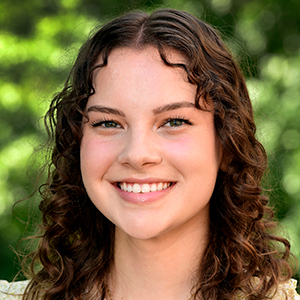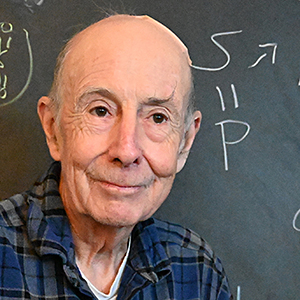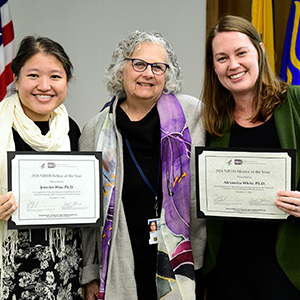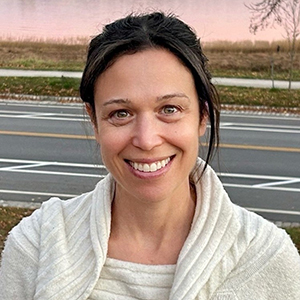After being canceled in 2020 due to the COVID-19 pandemic, the NIEHS Summer Internship Program came back in impressive form in 2021, overcoming the obstacles of working remotely. The experience was capped by a July 29 poster session that featured an array of exciting research projects by 50 interns.
“We were really impressed with how much the students learned this summer and how polished their presentations were, despite having to complete their internships entirely in a virtual format,” said Katy Hamilton, from the Office of Fellows’ Career Development.
 “Communicating science is an essential skill for our students, and the poster session gave them an opportunity to work on that skill,” said Hamilton. (Photo courtesy of Rawpixel.com / Shutterstock.com)
“Communicating science is an essential skill for our students, and the poster session gave them an opportunity to work on that skill,” said Hamilton. (Photo courtesy of Rawpixel.com / Shutterstock.com)Wide range of subjects
The two-month internship tested the abilities of mentors and students to design meaningful projects that provided research experience without a hands-on component.
“They had to be creative, especially in lab groups that typically conduct experiments requiring in-person work,” said Hamilton.
Four projects described the structure and characteristics of SARS-CoV-2, the virus that causes COVID-19. Others tackled the effects of the environment on health, such as wood-burning stoves on cardiovascular disease, pregnancy weight gain following exposure to phthalates, and potential environmental causes of inflammation.
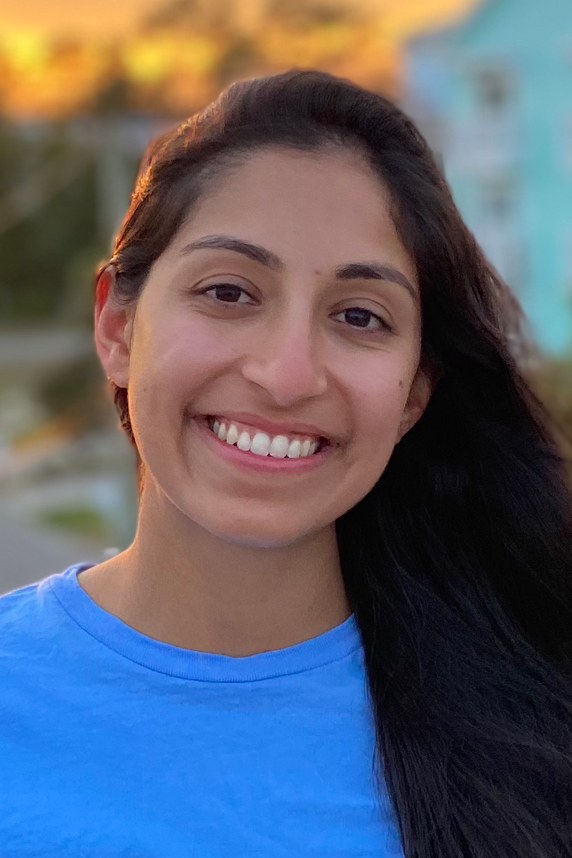 “My mentors provided valuable advice that really helped me as I worked on the project over the summer,” said Patel. (Photo courtesy of Opal Patel)
“My mentors provided valuable advice that really helped me as I worked on the project over the summer,” said Patel. (Photo courtesy of Opal Patel)Several student researchers described methods for identifying and differentiating between tumors and their environmental causes, such as the use of artificial intelligence in distinguishing types of lung cancer in mice.
Disadvantage and disease susceptibility
First place among graduate students was Opal Patel, who is pursuing a Ph.D. in epidemiology at the University of North Carolina at Chapel Hill. She looked at the association between neighborhood disadvantage and susceptibility to infectious diseases among participants in the Gulf Long-term Follow-up Study, undertaken after the 2010 Deepwater Horizon oil spill.
“We found that persons living in the most disadvantaged neighborhoods were more likely to have had frequent colds and pneumonia but that other outcomes, such as shingles, cold sores, and the flu, were not associated with neighborhood disadvantage,” said Patel. “Studies using more robust measures of immune dysfunction are needed.”
Kaitlyn Lawrence, Ph.D., an Intramural Research Training Award postdoctoral fellow in the Chronic Disease and Epidemiology Group, was one of Patel’s mentors, along with Dale Sandler, Ph.D., chief of the Epidemiology Branch in the institute’s Intramural Research Division.
“Opal is skilled and hardworking,” said Lawrence. “She learned quickly and brought her own ideas to the project, making the summer collaboration really exciting.”
 “I am very grateful to Dr. Cannon, Dr. Birnbaum, and the rest of the lab for supporting me,” said Alagar. (Photo courtesy of Jayalakshmi Alagar)
“I am very grateful to Dr. Cannon, Dr. Birnbaum, and the rest of the lab for supporting me,” said Alagar. (Photo courtesy of Jayalakshmi Alagar)GenX and machine learning
Jayalakshmi Alagar, a chemistry major from Williams College, developed an alternative method for measuring the effects of the environmental toxicant GenX on transporters at the blood-brain barrier. That chemical is part of the family of man-made compounds known as per- and polyfluoroalkyl substances (PFAS).
“We developed an automated instrument and coupled it with machine learning,” said Alagar. “It proved to be as accurate as manual methods, can screen multiple chemicals at once, can be readily adapted to other assays, and avoids use of lab animals,” she noted.
“I was amazed — the best student I’ve ever had,” said Ronald Cannon, Ph.D., from the NIEHS Division of the National Toxicology Program, who along with institute Scientist Emeritus Linda Birnbaum, Ph.D., mentored Alagar. “Jayalakshmi did almost all the writing, apart from a skeleton outline I gave her. I was very impressed.”
Cannon said that he originally sought to work with Alagar in 2020, before the program was canceled. “I felt an obligation,” he said. “My reward was working with her.”
Twenty-six NIEHS interns also shared their research during the National Institutes of Health (NIH) Summer Presentation Week, held Aug. 3-5. “Typically, the event is held on the main NIH campus in Bethesda, Maryland,” said Hamilton. “This year was the first time our students were able to participate, thanks to the virtual format.”
(John Yewell is a contract writer for the NIEHS Office of Communications and Public Liaison.)





